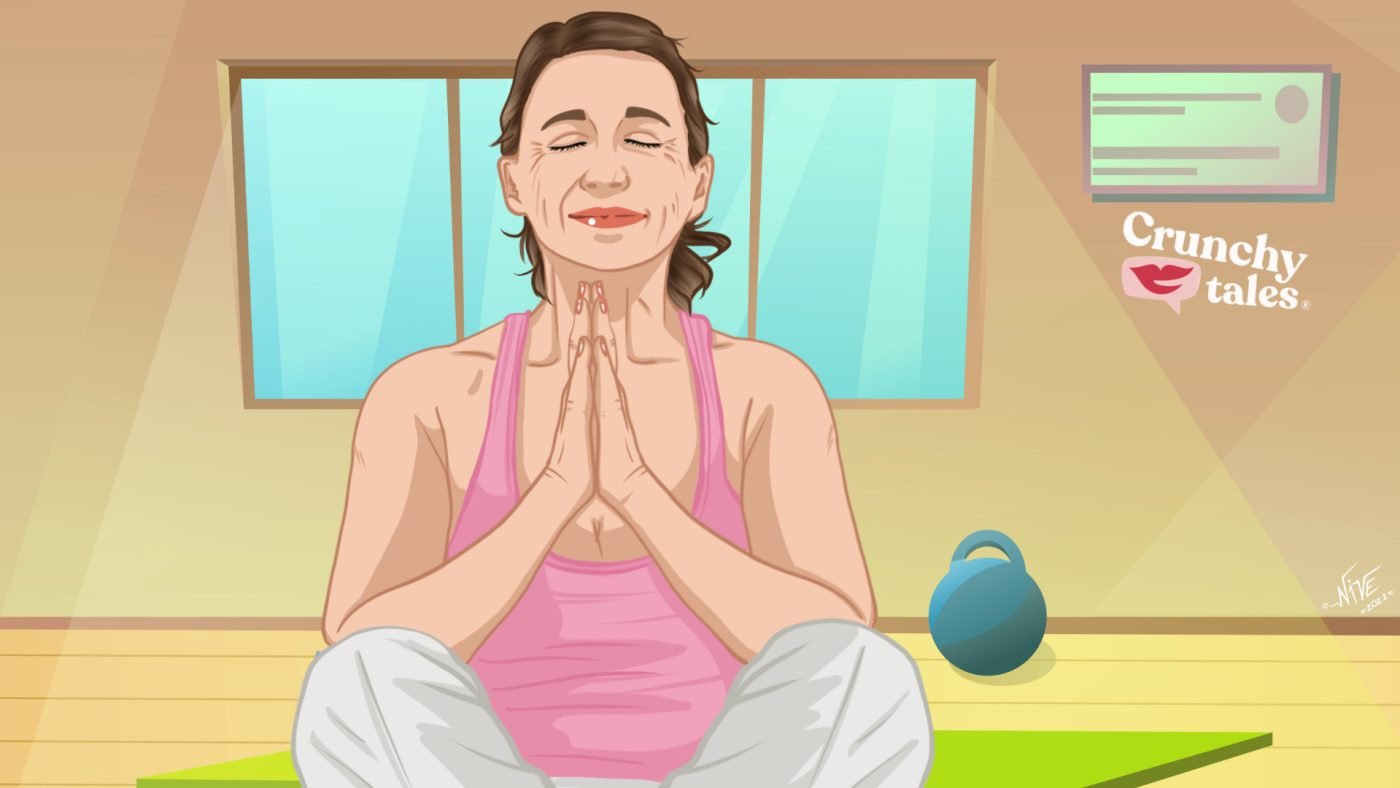Menopause & Yoga: Handy Poses To Ease Your Symptoms
If you are over 50 and you have always kindly declined your friend’s invitation to join her in a Yoga Class, stop, because now is the time to give it a go.
The transition from perimenopause to menopause that usually occurs at this age might be quite challenging for many of us, however, research has found that low-intensity workouts and yoga, in particular, are the right disciplines to help women manage many of the common physical and psychological symptoms.
According to the American Journal of Obstetrics and Gynecology, perimenopausal and menopausal women who combined a 90-minute weekly yoga class with a daily 20-minute home practice reported fewer hot flashes, improved sex lives, and a better quality of life. What’s more, a study published in the scientific journal Menopause showed that women aged 50 to 65 who did yoga regularly for 4 months slept better than those who didn’t.
It’s no wonder why, since 2019, the leading professional body for yoga teachers and trainers Yoga Alliance Professionals has seen a 300% increase in the number of training courses and events for menopause yoga.
Of course, this cannot replace your loss of oestrogen, but it may be part of a holistic approach that can include HRT, nutritional advice, therapy, and complementary therapies like massage and acupuncture.
What’s the best type of yoga for me?
The goal of yoga for menopause symptoms is to balance the nervous system and cool the body.
With that in mind, we generally recommend staying away from Bikram, Hatha, or Hot yoga -suggest health experts at Femme Pharma-. These practices tend to be intense and have the goal of creating additional heat in the body. Instead, look for a light Vinyasa, Flow, Yin, or Restorative yoga class. These use gentle and mindful movements to keep you grounded, connect you to your body, and relax the mind.
What about menopause yoga?
Unlike some other sports or exercise schedules, yoga is easy to practise, it can be tailored to just about any level of fitness and it is sure to be helpful in easing any kind of symptoms you are experiencing.
Menopause Yoga, in particular, “a combination of yoga poses, breathing exercises and mindful movement that’s been designed specially to help women going through the menopause supporting them on their own personal journey, self-knowledge and spiritual growth“, as explains Petra Coveney, a qualified yoga teacher with Yoga Alliance Professionals and the author of Menopause Yoga: A Holistic Guide to Supporting Women on Their Menopause Journey, might be one of the most appropriate types for those ladies who want to enrich their practice with self-enquiry methods, too.
Yoga can help boost bone density, retain muscle mass, flexibility, general mobility and balance which we need to avoid potentially dangerous falls and fractures that can be potentially fatal – says Petra Coveney -. Yoga meditation and breathing techniques can also help reduce stress and anxiety and long-term insomnia which all affect your brain and cardiovascular health.
The way you practise it can also make a difference: you will gain the most by going at your own pace and treating your body with kindness and compassion. A little and often is better for your health and well-being than pushing yourself once a week.
What style of yoga is most beneficial in menopause?
There’s also a mental factor. Practising yoga teaches presence and shows you how to stay calm in the face of uncomfortable or unfamiliar experiences. Many yoga practices use Pranayama, or breathing, to focus your attention on the present.
Of course, there are so many different styles of yoga and one size does not fit all.
If for instance, you’re experiencing hot flushes, then Hot yoga is not the best option. Instead, try the reclined butterfly or cobblers pose in combination with cooling, and breathing techniques with calming meditation.
“Rather than resisting and fearing your hot flushes, relax and lean into them so that they flow through you and pass more swiftly – suggests Petra Convey-. Resisting them will only make them last longer, feel hotter and more overwhelming.”
On the other hand, if you’re feeling fatigued, opting for a restorative yoga pose with your legs raised on a wall for a maximum of twenty minutes may do wonders. “This will help the nervous system to relax into what is called the parasympathetic nervous system (PNS) as well as improve your quality of rest and digestion,” she says.
Basically, it’s a cooling pose that works with gravity to get the blood flowing out of your feet and legs and into your heart and head, ideal for anyone with swollen legs and feet, varicose veins, or a job that has her on her feet all day.
What if you feel anxious or stressed? Then, a dynamic yoga practice may not suit you. The best pose to ease your tension might be the downward-facing dog one: “It stretches the spine and the back of the legs, which creates a feeling of physical and emotional release”, she explains.
Whether you’ve been doing this for years or haven’t even come close to a yoga mat, there’s a lot to be said for simply adding a little bit of gentle yoga to your everyday routine and helping reduce your menopause symptoms. As healthcare providers at Moreland OB-GYN Associates remark, using yoga to manage menopausal symptoms like pain relief and stress can be rewarding. Slowly but surely it will help you also ease any brain fog, improve memory, increase oxygen to the brain, and enhance your alertness.
Like this post? Support Us or Sign up to our newsletter to get more articles like this delivered straight to your inbox!






